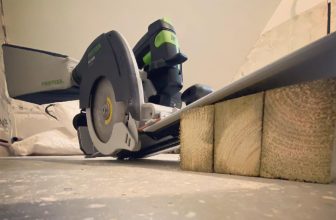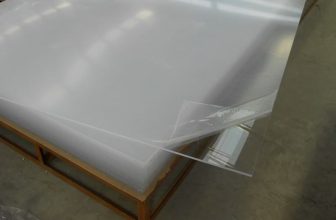What Size Circular Saw Is the Best?
One of the most common questions while looking for a good saw is “What size circular saw is the best to work with?” Actually, the answer strongly depends on your purposes and particular tasks. Professionals don’t even wonder when buying a new saw, but beginners shouldn’t make hasty decisions and get acquainted with the nuances instead. In the article, I will describe the main features of the different blade diameters to help you to choose the most appropriate device.
Contents
How to Choose a Circular Saw Size?
The main thing here is that everything depends on your particular purposes. Bigger blades are usually used for cutting hard materials of large sizes. In contrast, carpenters use small blades for very delicate tasks or when they want to save money. So, let’s plunge into the topic.
Circular Saw Blade Sizes
There is no standard circular saw blade size, but typically blade diameter ranges between 4 1/2” and 12”. Obviously, each size is targeted at some particular tasks and has its own benefits. Here is the list of some of the most popular circular saw blade sizes:
- 7 1/4”
- 6 1/2”
- 8 1/4”
- 10 1/4″
- 4 1/4”
Here I provide some information about each blade size:
Ps: cutting depth may vary a bit depending on the saw model.
6 1/2″
Cutting depth:
- Max (90 degrees) – 2.25”
- Max (45 degrees) – 1.55”
One of the most popular middle-size blades among amateur carpenters has some advantages over 7 1/4″. In contrast to 7 1/4 blades, 6 1/2 is lighter and frequently installed on mobile cordless devices working on Li-on batteries. However, corded saws are also widely equipped with this format.
6 1/2” sacrifices power and cutting depth characteristics to provide better mobility and lower price compared to 7 1/4” format.
7 1/4″
Cutting depth:
- Max (90 degrees) – 2.55”
- Max (45 degrees) – 1.8”
The most popular blade format among carpenters. 7 1/4” provides a good balance between cutting depth, power, and price.
8 1/4″
Cutting depth:
- Max (90 degrees) – 3”
- Max (45 degrees) – 2.2”
More advanced and powerful solution for cutting harder wood species or even aluminum in slightly larger volumes. The weight is slightly higher, but still can be used as a mobile device. Price, depth of cut, speed and power are increased compared to smaller solutions.
10 1/4″
Cutting depth:
- Max (90 degrees) – 3.75”
- Max (45 degrees) – 2.5”
Here comes a more stationary solution that is commonly bought for workshops. At this point weight becomes a big disadvantage, so carpenters usually don’t use it as a portable instrument. Such sizes (or bigger) are used for cutting hard wood species and large dimensional lumber. However, on much bigger diameters (17”>) cutting hard wood species is not possible because of low RPM.
Don’t forget that cutting metals or concrete requires special blades!
4 1/4″
Cutting depth:
- Max (90 degrees) – 1.6”
- Max (45 degrees) – 1.15”
The most popular small-size blade diameter. Saws with this blade diameter are extremely lightweight, mobile, and easily controlled. Usually it is used by amateur carpenters for cutting soft wood species (because of a high RPM – up to 6000 compared to 3000 – 4000 on bigger devices), tiny plywood or small aluminum parts. Also, it’s used for making small bevel cuts.
Low price and small sizes of such devices make it a good option for home usage.
What size circular saw suits me best?
Here I present a short circular saw sizing guide. First of all, we have to determine the main circular saw parameters that are in some way dependent on the blade diameter:
- Power
- Price
- Max RPM
- Cutting depth
- Control
- Cutting speed
Connections between some of these characteristics are pretty evident. Depth of cut depends on blade diameter; higher RPM ensures better control and higher cutting speed. More powerful devices can cut faster and are used for working with harder wood species.
Then, define your purposes. It could be:
Home usage
Just an instrument for unexpected situations.
It’s better to have a universal 6 1/2” solution for some small rare tasks like cutting plywood, plinths or parquet. If you have a limited budget, you can take a 5” or even 4” blade, but I’d not recommend that – blade diameter may be too small.
It has good control and is pretty lightweight.
Daily home usage
You’re working on a house repair/redecoration and don’t plan to use it on an ongoing basis.
Here everything depends on what materials you cut, but, generally, you should buy 7 1/4” or 8 1/4″. During a house repair, large volumes of lumber, plywood, parquets etc. are being cut, so the balance between convenience and efficiency is significant. Smaller formats like 6” or 5” cut slower in general, but bigger ones like 9” or 10” are not so comfortable to use for a long time because of their weight.
So, 7”-8” diameter is a good compromise at an affordable price.
Home workshop
You’re an amateur carpenter working with different types of wood on a daily basis.
It’s better to install a table saw or a miter saw in the workshop, but a circular saw is acceptable too.
If you’re working with large lumber pieces, it’s better to take 9 1/4”, 10 1/4”, or even 12” saw size, but you should remember that it’s harder to work with such big diameters. Otherwise, a more universal 7”, 8” or 9” would be the best option for a lower price.
Work on different job sites
You’re a carpenter doing your job in different places.
The main advantages here are mobility and energy self-reliance – not every time you’ll have access to the suitable power socket, so it’s better to have a cordless device. Lightweight cordless devices are typically less powerful, so your best option is somewhere between 6” and 9” depending on particular purposes.
Surely, you can take a corded saw for a much lower price, but it will be at your own risk.
Working with concrete and tiles
Higher RPM provides better cut quality in concrete or ceramics and it’s more comfortable to work with small or mid-sized saws here. So, 7”-8” blade diameters suit best for these tasks. However, I wouldn’t recommend buying 4”-5” saws if you are planning to work with large pieces of material or with 2×4.
Bear in mind that working with such hard materials or cutting soft metals requires special blades.
Working on a big construction site
Big constructions are like mobile workshops for carpenters, so my recommendations are pretty much the same as for the home workshop. However, typically large lumber pieces are used on constructions, so it’s better to take larger saw sizes.
That is the main conditions under which carpenters work. Don’t forget that you can always install a bit smaller blade on a bigger saw, so I’d recommend choosing a size with a small margin for unexpected purposes.
Obviously, the blade diameters list presented in the article is not complete – different manufacturers provide dozens of blade size variations. The purposes are general too, but I’m sure you’ll find the most suitable one for you.
FAQ
Some frequently asked questions on the subject of how to choose a circular saw size.
How do I know what size circular saw to get?
Determine your purposes. In general, cutting large wood pieces requires a large saw size (9” and bigger), but if you need comfort, you should take a smaller and lighter device (7 1/4” and lighter). 6 1/2” and 7 1/4″ are the universal formats suitable for home as well as for workshop.
What size circular saw do I need to cut 4×4?
4×4 dimensional lumber is 3 1/2″ inch in width and in height, so technically 10 1/4” blade would be just enough to cut it vertically. However, some 10 1/4” models have a shorter depth of cut, than 3 1/2 inches, so check it before making a purchase.
What is the most common circular saw blade size?
The most spread blade diameter is 7 1/4″. It provides a good balance between cutting depth, weight, power, and price. The second most popular saw size is 6 1/2″, which weighs less and is cheaper.
What Size Circular Saw Do I Need?
Everything depends on your purposes and budget. Determine your purposes and tasks and check it with the table in the article. Also, don’t forget that blade diameter is not the only one parameter for choosing a saw.
Which blade size do you use? For which tasks? Share your experience in the comments below!
“A good tool stays with you for many years and choosing carefully ensures the job is done right, your work is neat, and the tool is always a pleasure to use”







